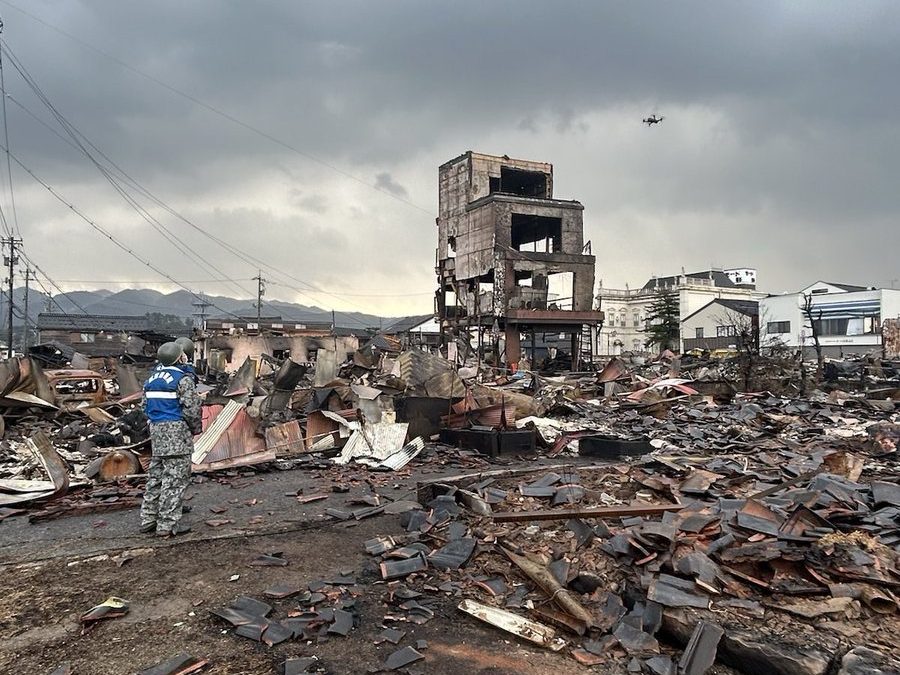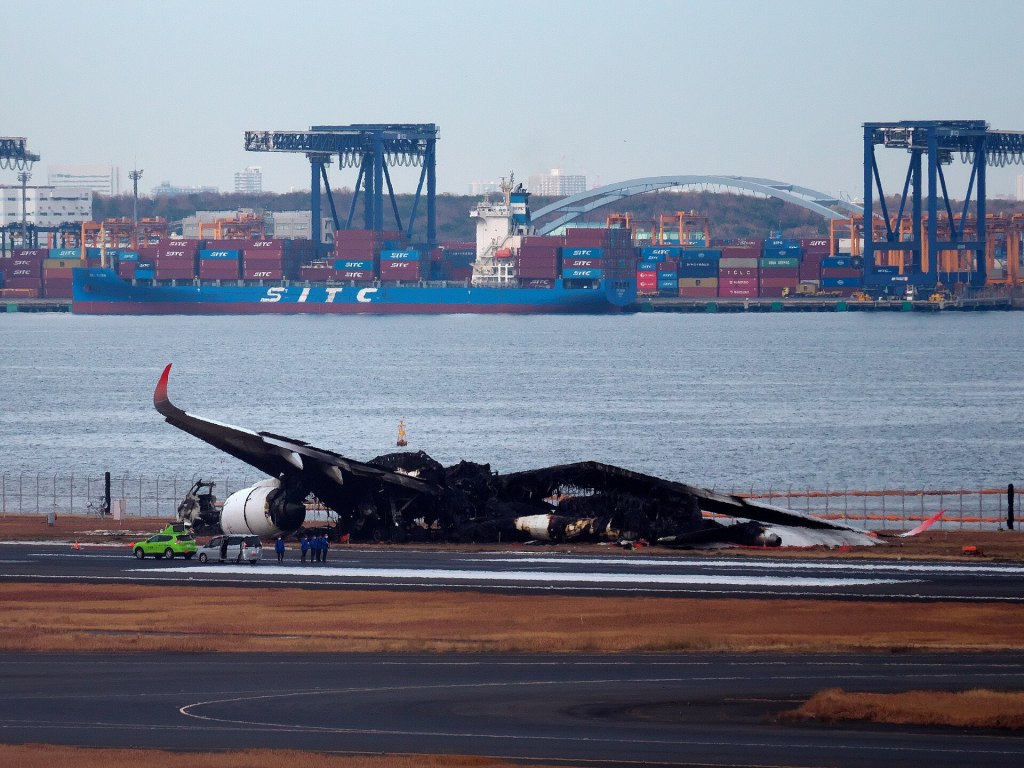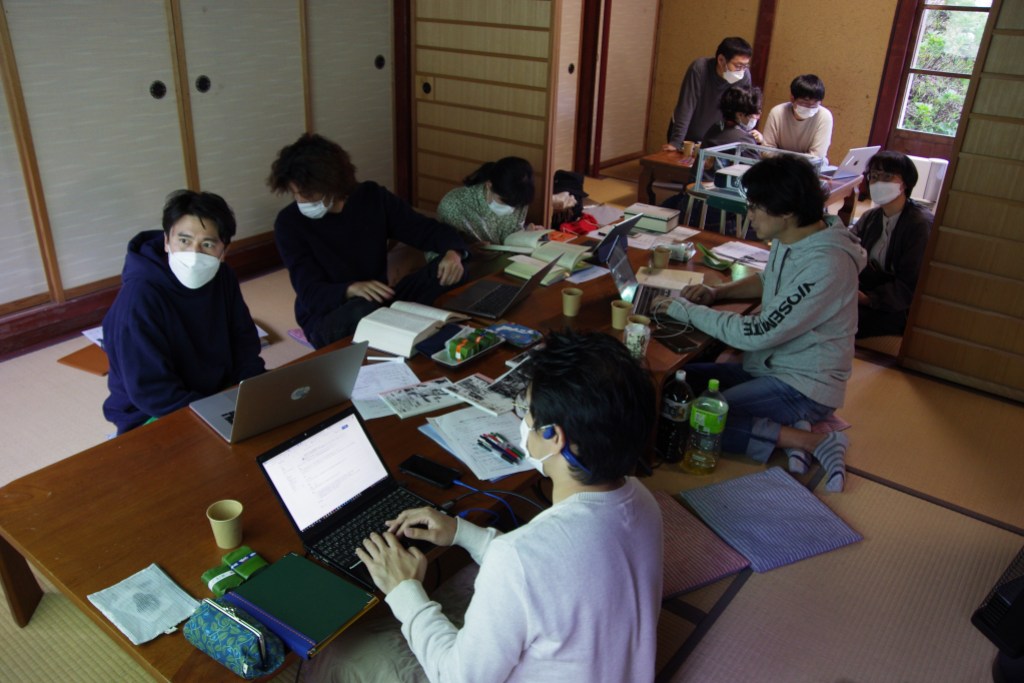Originally pushed on 9 April, 2024
On 1 January 2024, a 7.6 magnitude earthquake, the Noto earthquake, occurred with its epicenter off the Noto Peninsula in Honshu, Japan. The earthquake was not confined to the area off the Noto Peninsula, but shook a wide area of the ground, and the effects were widespread, with liquefaction phenomena observed. The Noto region has experienced major earthquakes in the past, especially since 2021, when earthquakes of intensity 5 or higher on the Japanese Seismic Intensity Index occurred once or twice a year. At the same time, each district in the Noto region had just begun to work diligently to recover from the previous earthquakes when an even larger earthquake struck.

I myself experienced the Tohoku earthquake and tsunami on 11 March 2011, when a junior member of the student newspaper suffered damage in Sendai (no injuries or other physical damage) and was completely unreachable for several days afterwards, and I remember hearing later that there was a long queue for public telephones. From that day onwards, the Tohoku region, which was the hardest hit in Japan, was reported on day after day and night, and at the same time the damage caused by the tsunami became clearer and clearer with each passing day. However, as I had no experience of visiting the Tohoku region, I could only discern what the landscape of Tohoku looked like before the disaster and what had happened there from maps, news reports and photos from the past.
Past photographs can be easily identified if the geographical information such as coordinates is organised, but otherwise it was very difficult for me, as I had no knowledge of the land. Google Street View had also started operating in Japan, but as it had not yet expanded to the Tohoku region, I could not see it either. Nowadays, driving window footage from the immediate aftermath of the earthquake is stored as DVDs and partly as YouTube videos at the ‘Centre for Remembering 3/11’ in the Sendai Mediatheque.
https://recorder311.smt.jp/movie/8256
This experience made me think: “If you don’t record the present, it may not be recorded in the future either”. This is the ‘now’, not just before or after the disaster. I really wanted to visit Tohoku earlier, but as a student, I was unable to do so, and it was not until 10-11 March 2012, exactly one year after the disaster, that I was actually able to visit Tohoku for the first time.
Let me return to the Noto Peninsula earthquake in the foreword. The mood in Japan, which had been in celebration mode at the beginning of the year, changed dramatically to one of coverage of the disaster, which had the same feeling as that of the Great East Japan Earthquake. The next day, 2 January, an accident occurred at Haneda Airport when a passenger aircraft collided with a Japan Coast Guard aircraft that was about to take off to assist local relief efforts.
In the midst of all this, I was beginning to think about what I could do for myself. I was thinking about why I was involved in the Wikimedia projects with connections all over the country, but I was unable to materialise the content of these projects. However, I had come to strongly feel that I did not want to have the same feelings and regrets as after the Tohoku earthquake and tsunami .

I sent a message from January 7, a week after the earthquake. When I sent the message, I received an email from a representative of the Wikimedia Foundation asking about the situation of the Noto Peninsula earthquake, and I decided that I had to move in earnest. The recipients were the members of the Eizo-Workshop, which is developing a project in Ishikawa Prefecture, where the Noto Peninsula is located. The Eizo-Workshop had been involved in many projects in Noto, such as the Okunoto International Art Festival, and had connections with the local community. In addition to this, they had also helped with the collaboration between Wikimedia and the video workshop in the past and with the construction of ‘ Kagaga ‘. The details of this are to be found in a separate article.
Kaga City in Ishikawa Prefecture, which is the main field of the Eizo-workshop, has a district that developed from the ‘Kitamae-bune’, which sailed the Sea of Japan to transport goods and earn a living, and the same is true for the district in Noto. More so, we also had the opportunity to work together at the 8th Research Conference of the Society for Digital Archiving held in Kanazawa, Ishikawa Prefecture in November 2023, and we have a connection there.

In his own message to the recipient, he wrote. Extracted and summarised in part.
Of course, this is only if everyone settles down, but I am trying to find the right time to go to Noto to film it properly as a record. I feel that only those in Ishikawa will know when that timing will be.
To be honest, I want to document the damage. Everything should be documented, but I have not been able to materialise it yet.
I am going to Fukui at the end of March, but the person in charge lives on the sea side and he himself has not suffered any damage, but there are stories of houses collapsing around him, and to be honest, I don’t know where to base my record.
I was a student at the time of the Great East Japan Earthquake, so I remember having my juniors who were there take photos of Sendai Station and other places and archive them. I’m really worried about what I should do this time. Including the timing.
The need for archives is as important during and immediately after a disaster as it is before it occurs, and even after recovery has progressed.Sendai Mediatheque, mentioned in the section on disaster-related footage, has been recording and organising a series of events from before to after the disaster. When I heard about this from a member of the film workshop, I realised once again the importance of documenting the present. It reminded me of the term ‘archival spirit’ from a book I read on a different topic.
The spirit of continuing to collect in order to build a collection, the spirit of continuing to record daily events in a diary, the spirit of continuing to photograph landscapes around the world – all of these could be described as actions that internalise the ‘archival spirit’ of disciplining daily behaviour so that the ‘value of the data does not decrease dramatically’. Google, which continues to photograph streets around the world, could also be described as an organisation with an archival spirit.
Kitamoto, ‘Chapter 7: The Irreversibility of Disasters and the Spirit of Archives – Lessons from Digital Typhoon and Great East Japan Earthquake Digital Archives and Memory Graphs’, in Suzuki, ed. and Imamura, Supervision of Disaster Records for the Future (2019), p. 178.
At a subsequent meeting, approximate destinations and dates were discussed and it was decided that the three of us would visit Nanao City, Noto Town, Suzu City and Wajima City from Kanazawa for three days from 15 to 17 February, but the final dates would be decided in coordination with the respective destinations.
They also produced a ‘Prospectus of Interview’ for the visit. This was proposed by me as a reminder of what I used to bring with me on inspection visits when I was a student, and the paper was filled with our own thoughts and ideas.
We are engaged in grass-roots activities to archive (record and preserve the events of) the Noto Peninsula Earthquake of 2024, which occurred on 1 January 2024. In contrast to mass media reports and records made by national research committees, each citizen’s perspective captures episodes rooted in ‘the place’, ‘the time’ and ‘the culture’. We transmit these stories to the future and believe that someone who receives them will change the world for the better.
Today we are here to document the damage to the city with video and photographs. We would like to use this as a starting point for an archive to continuously document the reconstruction and transition of the city.
Eizo-workshop, Araisyohei: ‘Noto Peninsula Earthquake Archive, “To remember the first day of 2024″‘ (prospectus for the interview).
The actual report will be published again as a sequel, but while some parts of downtown Nanao have made some progress in restoration, there are still many parts of Suzu City, which covers a vast area from Nanao to the tip of the peninsula, that have not even been restored, and the visit made me realise how great the power of nature is and how helpless people are. Wajima City, Wajima Prefecture. We were also able to visit a port in Monzen-cho, Wajima City (on the western side of the peninsula), where the seabed had risen. Mr Sakāori had already uploaded a comparison image on Wikipedia using aerial photographs from the Geospatial Information Authority of Japan (GSI), but I am glad I was able to take photographs of the area as well.
At the same time, the visit also allowed us to meet key people from different parts of the country. This included community builders, cultural assets and artists, among many others, with whom we spoke. We each promised to meet again in the future and left Noto.

Can you help us translate this article?
In order for this article to reach as many people as possible we would like your help. Can you translate this article to get the message out?
Start translation